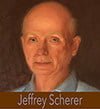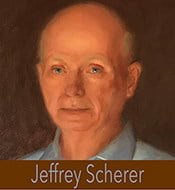 Week 34 was spent in Minnesota dealing with a dental appointment, recovering from the light-treatment of my scalp and visiting with friends. I was also able to meet with Dan Vercruysse, Kate Michaud and Eric Amel (the recipients of the first three awards—and now on the jury) to discuss the essay question for the 2018 Scherer Travel Fellowship at MSR Design. The idea that is emerging is related to “contested terrain.” This fellowship that Lea and I fund enables an employee to travel to a place of his or her choosing to study the built environment. Dan went to Cambodia and worked with relief agencies on building village fresh water wells; Kate went to Columbia and studied the positive impact of building “library gardens” in strive-stricken areas of Bogota and Medellín (see this “Guardian” article for an excellent summary of the positive results of the efforts); Eric will, this year, go to China and study the use of the materials from demolished Chinese cities for new building.
Week 34 was spent in Minnesota dealing with a dental appointment, recovering from the light-treatment of my scalp and visiting with friends. I was also able to meet with Dan Vercruysse, Kate Michaud and Eric Amel (the recipients of the first three awards—and now on the jury) to discuss the essay question for the 2018 Scherer Travel Fellowship at MSR Design. The idea that is emerging is related to “contested terrain.” This fellowship that Lea and I fund enables an employee to travel to a place of his or her choosing to study the built environment. Dan went to Cambodia and worked with relief agencies on building village fresh water wells; Kate went to Columbia and studied the positive impact of building “library gardens” in strive-stricken areas of Bogota and Medellín (see this “Guardian” article for an excellent summary of the positive results of the efforts); Eric will, this year, go to China and study the use of the materials from demolished Chinese cities for new building.
The current national debate about about race, gender, xenophobia and the civil war, which is being incited by #45, is raising important issues related to physical monuments (see this interesting article about mass-produced monuments from the 1880’s) that celebrate heroes from an era of war in the past.
- Is a monument to a civil-war-lord a reminder of the horrors of the past or a celebration of that past?
- What does it say about a person when they choose one or the other? If all such monuments are removed, will this sanitize the past and eradicate any physical evidence to remind later generations of the horrible transgressions?
- Should they be corralled into museum?
- Does leaving them alone connote argument with what they are celebrating?
This circular debate is creating a fertile ground to seriously consider the role architecture and art plays in perpetuating transgression against humanity. Besides this specific debate, there is a larger issue related the architecture of an era: preservation by legal or legislative actions.
I still remember my first sight of New York. It was really another city when I was born—where I was born. We looked down over the Park Avenue streetcar tracks. It was Park Avenue, but I didn’t know what Park Avenue meant downtown. The Park Avenue I grew up on, which is still standing, is dark and dirty. No one would dream of opening up a Tiffany’s on that Park Avenue, and when you go downtown you discover that you are literally in the white world. It is rich—or at least it looks rich. It is clean—because they collect the garbage downtown. There are doormen. People walk about as though they owned where they are—and indeed they do…. You know—you know instinctively—that none of this is for you. You know this before you are told. And who is it for and who is paying for it? And why isn’t it for you? —James Baldwin, “A Talk for Teachers,” 1963
This quote is from “Contested Terrain” is the first chapter in a book by Dolores Hayden , The Power of Place,Urban Landscapes as Public History, 1996, MIT Press. She is the author of The Grand Domestic Revolution: A History of Feminist Designs for American Homes, Neighborhoods, and Cities: and Redesigning the American Dream: The Future of Housing, Work, and Family Life. Hayden is a professor of architecture, urbanism, and American studies at Yale University.
In the conclusion of this essay, she says
George Kubler once described the historian’s craft as delineating the “shape of time.” The art of the historian, he wrote, resembles that of the painter, “to discover a patterned set of properties that will elicit recognition all while conveying a new perception of the subject.” (18) The historian who confronts urban landscapes in the 1990s needs to explore their physical shapes along with their social and political meanings. Learning the social meanings of historic places by discussing them with urban audiences involves the historian in collaboration with the residents themselves, as well as with planners and preservationists, designers and artists. It engages social, historical, and aesthetic imagination to locate where narratives of cultural identity, embedded in the historic urban landscape, can be interpreted to project their largest and most enduring meanings for the city as a whole.
We all, to some extent. live in a “contested terrain.” I am still processing this and will continue to add to the debate on this blog.


Recent Comments